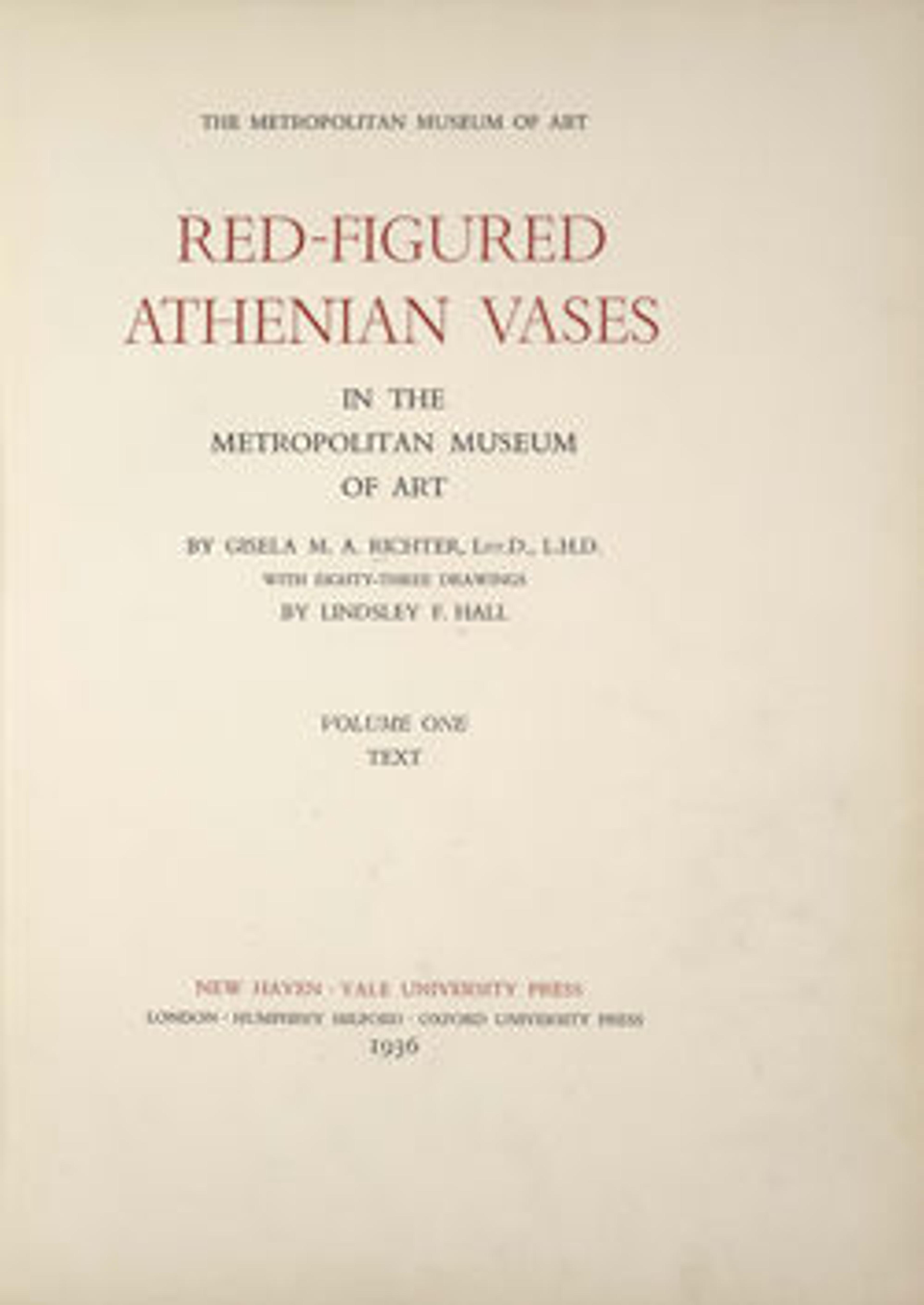Terracotta bell-krater (bowl for mixing wine and water)
Obverse, woman playing lyre and two women listening
Reverse, women
The scene here has an intimacy that is exceptional in Greek vase-painting. In an indoor setting, a seated woman plays the lyre. Before her stand two women, one of whom rests her chin and hands on the shoulder of the other. The listeners are enraptured by what they hear. All of the elements in the representation reflect daily life in mid-fifth century B.C. Athens. It is nonetheless tempting to see the subject in more specific terms. One scholar has suggested that the women might be muses. Another possibility is that the performer is the poetess Sappho, who appears on several black-figured and red-figured vases.
Reverse, women
The scene here has an intimacy that is exceptional in Greek vase-painting. In an indoor setting, a seated woman plays the lyre. Before her stand two women, one of whom rests her chin and hands on the shoulder of the other. The listeners are enraptured by what they hear. All of the elements in the representation reflect daily life in mid-fifth century B.C. Athens. It is nonetheless tempting to see the subject in more specific terms. One scholar has suggested that the women might be muses. Another possibility is that the performer is the poetess Sappho, who appears on several black-figured and red-figured vases.
Artwork Details
- Title: Terracotta bell-krater (bowl for mixing wine and water)
- Artist: Attributed to the Danaë Painter
- Period: Classical
- Date: ca. 460 BCE
- Culture: Greek, Attic
- Medium: Terracotta; red-figure
- Dimensions: H. 11 7/8 in. (30.2 cm)
diameter of mouth 13 5/8 in. (34.6 cm) - Classification: Vases
- Credit Line: Rogers Fund, 1923
- Object Number: 23.160.80
- Curatorial Department: Greek and Roman Art
Audio
1054. Terracotta bell-krater (bowl for mixing wine and water), Part 1
0:00
0:00
We're sorry, the transcript for this audio track is not available at this time. Please email info@metmuseum.org to request a transcript for this track.
Listen to more about this artwork
More Artwork
Research Resources
The Met provides unparalleled resources for research and welcomes an international community of students and scholars. The Met's Open Access API is where creators and researchers can connect to the The Met collection. Open Access data and public domain images are available for unrestricted commercial and noncommercial use without permission or fee.
To request images under copyright and other restrictions, please use this Image Request form.
Feedback
We continue to research and examine historical and cultural context for objects in The Met collection. If you have comments or questions about this object record, please contact us using the form below. The Museum looks forward to receiving your comments.
